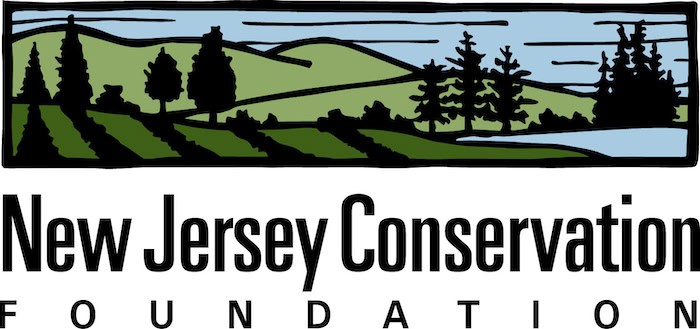By Alison Mitchell
Long before the rise of interstate highways, railroads were king. During the golden age of rail transportation in the late 1800s and early 1900s, passengers and freight relied on trains to get everywhere from the next town to distant locations.
But as cars and tractor-trailers took over, many rail enterprises were doomed. Unprofitable train lines were often abandoned, tracks and all.
Fortunately, many former rail lines in New Jersey and beyond have been repurposed as pedestrian and bicycle paths. They are known as “rail trails.”
It is easy to see why old train lines make terrific trails. They are wide and flat and level enough to be accessible to almost everyone. They are removed from street traffic and come complete with bridges to cross waterways and roads; a huge cost savings compared to building new trails from scratch.
Rail trails in urban areas are especially valuable. In addition to providing a place for people to meet and exercise, they give city dwellers a safer way to commute on foot or by bike to work, shopping and entertainment.
New Jersey already has dozens of rail trails, from Sussex County to Cape May. Examples include the D&R Canal Trail along the Delaware River (the former Belvidere Delaware Railroad), Middlesex Greenway Trail (Lehigh Valley Railroad), Paulinskill Valley Trail (New York, Susquehanna and Western Railway) and Middle Township Bike Path (Cape May Seashore Line).
Two new urban rail trails may soon be joining the roster in northern New Jersey.
In September, Gov. Phil Murphy announced the state’s $65 million purchase of the old Boonton Line between Montclair and Jersey City for a trail to be known as the Essex Hudson Greenway.
In November, the Jersey City Council approved the Sixth Street Embankment plan, which calls for transforming an abandoned elevated train line into a public park.
Both proposals owe a hat tip to the High Line in Manhattan, the former New York Central Railroad spur that has become a popular destination for New York locals and visitors alike.
The 1.45-mile-long elevated linear park, greenway and rail trail is on the west side of Manhattan and is filled with benches, gardens and art installations.
The Essex Hudson Greenway will turn nearly 9 miles of abandoned Boonton Line railroad corridor into a 100-foot-wide linear park with a hiking and biking path. It will pass through New Jersey’s two largest cities, Newark and Jersey City, and provide much-needed recreation, transportation and access to nature.
The Boonton Line was shut down in 2002 and early support for creating a greenway was galvanized by the New Jersey Bike and Walk Coalition, a statewide nonprofit organization advocating for the safety of bicyclists and pedestrians.
The project got a boost in 2020 when the nonprofit organization Open Space Institute reached an agreement to buy the property for $65 million from the Norfolk Southern Railway Company.
The biggest boost came earlier this year when the state agreed to buy the 135-acre property instead and took the lead role in developing it into a park. The newly acquired land spans Montclair, Glen Ridge, Bloomfield, Belleville, Newark, Kearny, Secaucus and Jersey City.
According to the state, $20 million in federal American Rescue Plan funds have been included in the budget to remediate contamination and start the structural work needed to convert the rail line into a recreational space and pedestrian corridor.
The state is also developing a master plan for opening the greenway to the public, segment by segment, over the course of several years.
When completed, the greenway will be part of the 1,300-mile Sept. 11th National Memorial Trail. The trail is a triangular route – currently about half completed – connecting the National Memorial and Museum in New York to the National 9/11 Pentagon Memorial in Arlington, Va., and the Flight 93 National Memorial in Shanksville, Pa.
In Jersey City, the council is planning to move forward with a redevelopment proposal to create an elevated public park out of the Sixth Street Embankment, a former rail line, pending the settlement of a dispute over ownership of the land.
As envisioned, the 30-foot-wide public walkway would stretch for about seven blocks, from Marin Boulevard to Brunswick Street.
The elevated railroad has been the subject of a 17-year tug-of-war between the city and Conrail, which sold the embankment in 2005 to private owners.
Jersey City challenged the sale in court and has been working out the details of a settlement that would allow the park to be built.
The plan approved by the council in November includes an amendment stating that the redevelopment will not take effect until a settlement agreement is reached and the city obtains title to the land. The redevelopment project also includes zoning for high-rise development.
Here’s hoping plans for the Essex Hudson Greenway and the Sixth Street Embankment will quickly come to fruition. Both would be a huge asset in the most densely populated corner of this state we’re in.
For information about New Jersey’s existing rail trails, visit the Rails to Trails Conservancy’s website at https://www.traillink.com/trailsearch/?mmloc=NJ
Alison Mitchell is a co-executive director of the New Jersey Conservation Foundation, Far Hills.

